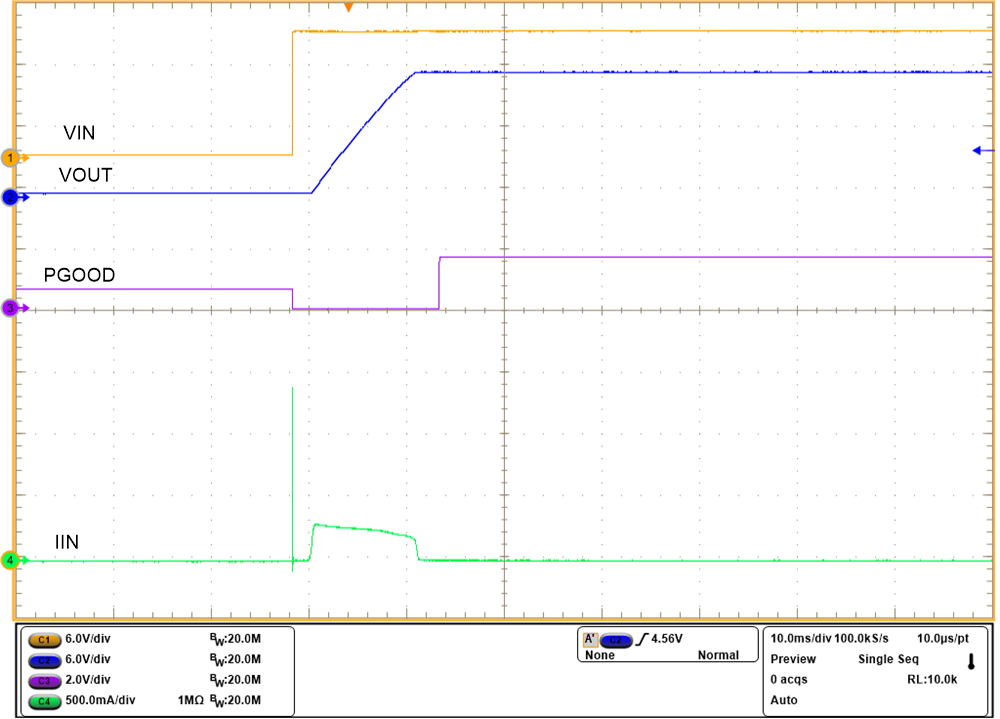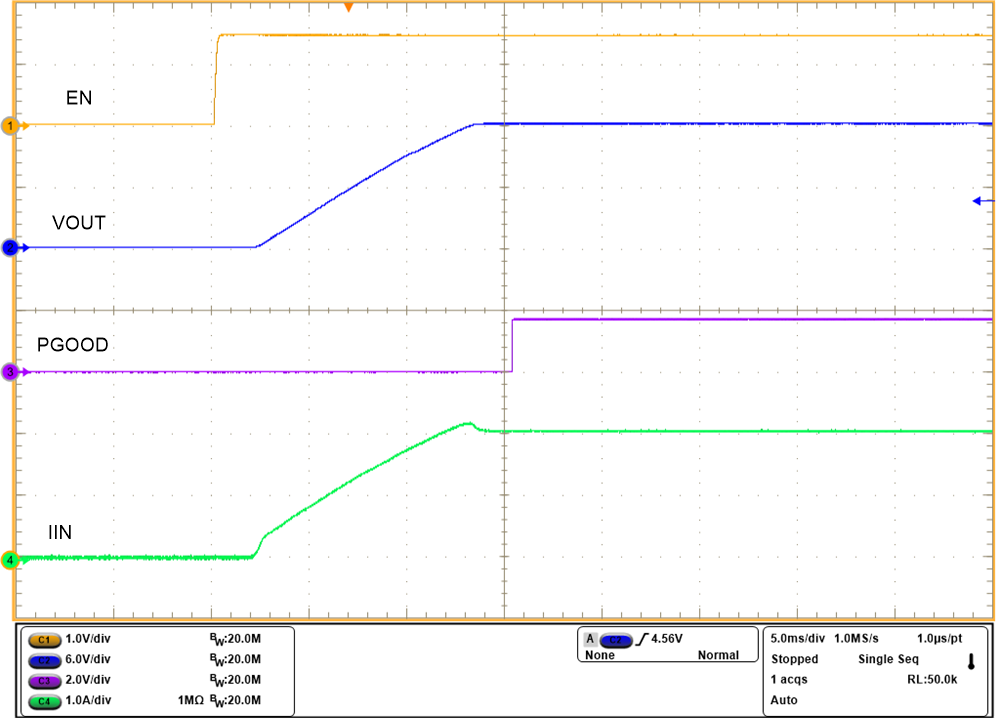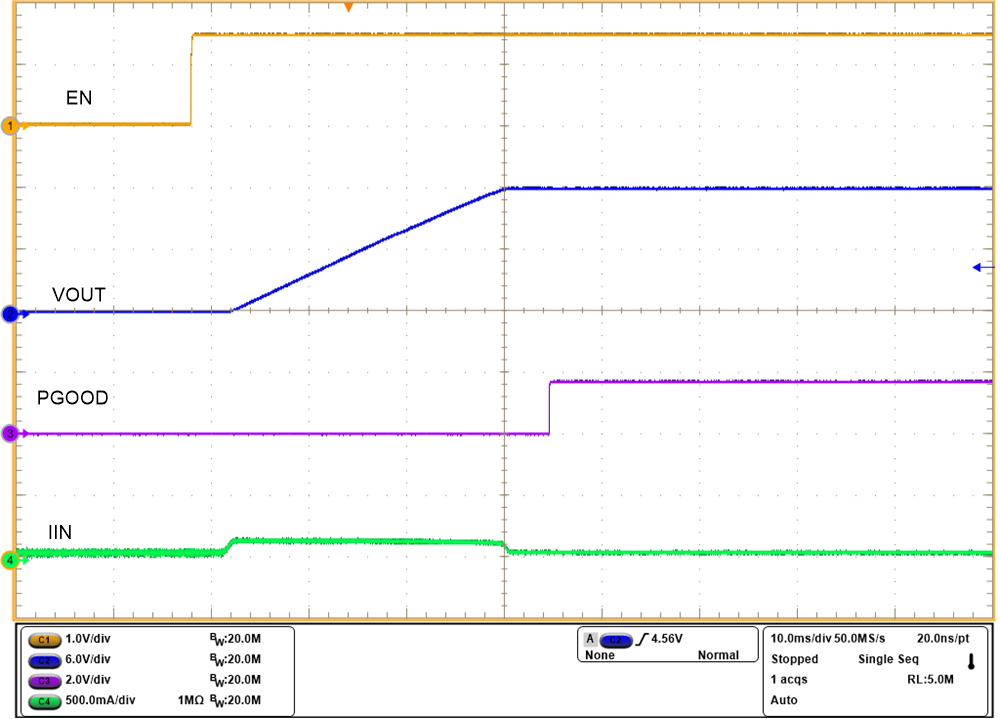SLVSHH5B August 2023 – December 2024 TPS25983
PRODUCTION DATA
- 1
- 1 Features
- 2 Applications
- 3 Description
- 4 Device Comparison Table
- 5 Pin Configuration and Functions
- 6 Specifications
-
7 Detailed Description
- 7.1 Overview
- 7.2 Functional Block Diagram
- 7.3
Feature Description
- 7.3.1 Undervoltage Protection (UVLO and UVP)
- 7.3.2 Overvoltage Protection (OVP)
- 7.3.3 Inrush Current, Overcurrent, and Short-Circuit Protection
- 7.3.4 Overtemperature Protection (OTP)
- 7.3.5 Analog Load Current Monitor (IMON)
- 7.3.6 Power Good (PG)
- 7.3.7 Reverse Current Blocking FET Driver
- 7.3.8 Fault Response
- 7.4 Device Functional Modes
-
8 Application and Implementation
- 8.1 Application Information
- 8.2
Typical Application: Standby Power Rail Protection in Datacenter Servers
- 8.2.1 Design Requirements
- 8.2.2
Detailed Design Procedure
- 8.2.2.1 Device Selection
- 8.2.2.2 Setting the Current Limit Threshold: RILIM Selection
- 8.2.2.3 Setting the Undervoltage and Overvoltage Lockout Set Point
- 8.2.2.4 Choosing the Current Monitoring Resistor: RIMON
- 8.2.2.5 Setting the Output Voltage Ramp Time (TdVdt)
- 8.2.2.6 Setting the Transient Overcurrent Blanking Interval (tITIMER)
- 8.2.2.7 Setting the Auto-Retry Delay and Number of Retries
- 8.2.3 Application Curves
- 8.3 System Examples
- 8.4 Power Supply Recommendations
- 8.5 Layout
- 9 Device and Documentation Support
- 10Revision History
- 11Mechanical, Packaging, and Orderable Information
Package Options
Mechanical Data (Package|Pins)
- RGE|24
Thermal pad, mechanical data (Package|Pins)
- RGE|24
Orderable Information
6.8 Typical Characteristics

A.
Figure 6-1 ON Resistance vs Temperature

A.
Figure 6-5 EN/UVLO Falling Threshold for Lowest Current Consumption
| VENUVLO = 1 V, OUT = Open |


| Across Process, Voltage, Temperature Corners |


| VIN = 0 V, IPG = 26 μA |



| CIN = 1 μF | COUT = 220 μF | CdVdt = 3.3 nF |

| COUT = 220 μF | CdVdt = 3.3 nF | ROUT = 6 Ω |

| RILIM = 82 Ω | CITIMER = 4.7 nF | |
| Output load current ramped above the ILIM threshold for short duration without triggering current limit |

| RILIM = 82 Ω | CITIMER = 4.7 nF | CRETRY_DLY = 1 nF, CNRETRY = Open |

| RILIM = 82 Ω | CITIMER = 4.7 nF | CRETRY_DLY = Open, CNRETRY = Open |

| RILIM = 82 Ω |

| RILIM = 82 Ω |

A.
Figure 6-2 Supply UVP Threshold vs Temperature
A.
Figure 6-4 EN/UVLO Pin Threshold vs Temperature
| VENUVLO = 2 V, OUT = Open |

| VENUVLO = 0 V, OUT = Open |


| Across Process, Voltage, Temperature Corners, Normalized to mean value of 243 μA/A |

| VIN = 0 V, IPG = 26 μA |




| COUT = 220 μF | CdVdt = 10 nF | ROUT = Open |


| RILIM = 82 Ω | CITIMER = 4.7 nF | |
| Output load current ramped above the ILIM threshold beyond the ITIMER duration triggers current limit |

| RILIM = 82 Ω | CITIMER = 4.7 nF | |
| Output load current ramped above the ILIM threshold beyond the ITIMER duration triggers circuit breaker response |

| RILIM = 82 Ω |

| RILIM = 82 Ω |